Showing Spotlights 17 - 24 of 33 in category All (newest first):
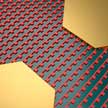 Terahertz (THz) frequencies, which occupy a middle ground between microwaves and infrared light, are seen as the future of wireless communications because they offer a higher bandwidth capacity for data transmission than currently used microwave radiation. Researchers have improved the photoconductive switch, a key optoelectronic element in THz technology, with a perfectly-absorbing photoconductive metasurface. The perfect absorption within this metasurface allows to make the active region of THz wave detectors significantly thinner in comparison to conventional detectors. Apart from reducing the size of THz detectors, it also improves their efficiency.
Terahertz (THz) frequencies, which occupy a middle ground between microwaves and infrared light, are seen as the future of wireless communications because they offer a higher bandwidth capacity for data transmission than currently used microwave radiation. Researchers have improved the photoconductive switch, a key optoelectronic element in THz technology, with a perfectly-absorbing photoconductive metasurface. The perfect absorption within this metasurface allows to make the active region of THz wave detectors significantly thinner in comparison to conventional detectors. Apart from reducing the size of THz detectors, it also improves their efficiency.
Apr 24th, 2019
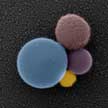 Inspired by chiral molecular structures, scientists are developing strategies to build artificial chiral materials by mimicking natural molecular structures using functional materials. Specifically, metal nanomaterials exhibit tailorable optical properties upon excitation of surface plasmons and become one of the most promising components to realize chiral optical metamaterials. New work provides a macroscopic model to understand the origin of chirality because the structures of the chiral meta-molecules are observable under a microscope and also the optical chirality is several orders of magnitude stronger than the intrinsic chirality of organic molecules.
Inspired by chiral molecular structures, scientists are developing strategies to build artificial chiral materials by mimicking natural molecular structures using functional materials. Specifically, metal nanomaterials exhibit tailorable optical properties upon excitation of surface plasmons and become one of the most promising components to realize chiral optical metamaterials. New work provides a macroscopic model to understand the origin of chirality because the structures of the chiral meta-molecules are observable under a microscope and also the optical chirality is several orders of magnitude stronger than the intrinsic chirality of organic molecules.
Mar 14th, 2019
 4D printing allows a 3D printed structure to change its configuration or function with time in response to external stimuli such as temperature, light, water, pH, etc. The basic idea is to manipulate materials at nano and micro levels in order to produce, via 3D printing, materials that can modify their structures over time at the macro level. Based on 4D printing, 3D printed objects from nano- to macroscale can be fabricated as smart devices, metamaterials, and origami for various functional applications in prototype, aerospace, biomedicine, etc.
4D printing allows a 3D printed structure to change its configuration or function with time in response to external stimuli such as temperature, light, water, pH, etc. The basic idea is to manipulate materials at nano and micro levels in order to produce, via 3D printing, materials that can modify their structures over time at the macro level. Based on 4D printing, 3D printed objects from nano- to macroscale can be fabricated as smart devices, metamaterials, and origami for various functional applications in prototype, aerospace, biomedicine, etc.
Jan 31st, 2019
 Over the past several years, metal nanoparticles photosensitization over semiconductors with a large band gap has emerged as a promising strategy for developing visible-light responsive photocatalytic materials. In new work, researchers demonstrate a new plasmonic metamaterial can absorb nearly 100% of incident light (of a specific color) and use this energy to accelerate the production of chemicals. In constructing the near-perfect absorber, the researchers employ gold nanoparticles, TiO2 as the spacer layer, and a continuous gold thin film as the rear reflective layer.
Over the past several years, metal nanoparticles photosensitization over semiconductors with a large band gap has emerged as a promising strategy for developing visible-light responsive photocatalytic materials. In new work, researchers demonstrate a new plasmonic metamaterial can absorb nearly 100% of incident light (of a specific color) and use this energy to accelerate the production of chemicals. In constructing the near-perfect absorber, the researchers employ gold nanoparticles, TiO2 as the spacer layer, and a continuous gold thin film as the rear reflective layer.
Nov 28th, 2018
 Well-defined complex nanostructures for metamaterials with unique optical properties - such as negative refractive index, strong artificial optical activity and perfect absorption - are usually prepared by top-down approaches, including direct laser writing, multiple e-beam lithography, and membrane projection lithography. In a recent breakthrough, scientists have combined block copolymer self-assembly and an anodized aluminum oxide template to fabricate unique complex nanostructures over a large (centimeter) area.
Well-defined complex nanostructures for metamaterials with unique optical properties - such as negative refractive index, strong artificial optical activity and perfect absorption - are usually prepared by top-down approaches, including direct laser writing, multiple e-beam lithography, and membrane projection lithography. In a recent breakthrough, scientists have combined block copolymer self-assembly and an anodized aluminum oxide template to fabricate unique complex nanostructures over a large (centimeter) area.
Apr 26th, 2018
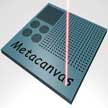 The metacanvas is a completely new generation of technology compared to all previous works. It is a tunable photonic devices based on vanadium dioxide that is lithography-free and fully reconfigurable. oth the patterns and the functionalities of the metacanvas can be arbitrarily reconfigured, which leads to many more degrees of freedom in metasurface design and functionalities. One piece of metacanvas is able to function as different optical components - hologram, phase-array, polarizer, modulator, etc. - at different times and on command, which has never been achieved in any of the previous VO2.
The metacanvas is a completely new generation of technology compared to all previous works. It is a tunable photonic devices based on vanadium dioxide that is lithography-free and fully reconfigurable. oth the patterns and the functionalities of the metacanvas can be arbitrarily reconfigured, which leads to many more degrees of freedom in metasurface design and functionalities. One piece of metacanvas is able to function as different optical components - hologram, phase-array, polarizer, modulator, etc. - at different times and on command, which has never been achieved in any of the previous VO2.
Feb 7th, 2018
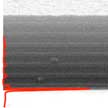 Plasmonic metasurfaces can be designed to achieve the singular-phase condition, yet this typically requires complex electromagnetic design and low-throughput fabrication techniques such as electron beam lithography. In a new work, researchers have developed a simple and robust planar singular-phase sensing platform for remote temperature detection, which does not require nano-patterning and exhibits singular-phase behavior due to the excitation of topologically-protected Tamm surface states.
Plasmonic metasurfaces can be designed to achieve the singular-phase condition, yet this typically requires complex electromagnetic design and low-throughput fabrication techniques such as electron beam lithography. In a new work, researchers have developed a simple and robust planar singular-phase sensing platform for remote temperature detection, which does not require nano-patterning and exhibits singular-phase behavior due to the excitation of topologically-protected Tamm surface states.
Jan 18th, 2018
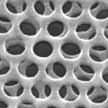 Chiral metamaterials with strong chiroptical properties are an interesting new platform for optical signal modulation. Although plasmonic super chiral fields have been successfully applied to detect the chiral structures of proteins, it has remained challenging to detect the structural handedness of drug molecules due to their small size and thinner film adsorbed on the surface of metamaterials. Researchers now have reported a new type of plasmonic chiral metamaterial by stacking two layers of identical achiral gold nanohole arrays into moire patterns.
Chiral metamaterials with strong chiroptical properties are an interesting new platform for optical signal modulation. Although plasmonic super chiral fields have been successfully applied to detect the chiral structures of proteins, it has remained challenging to detect the structural handedness of drug molecules due to their small size and thinner film adsorbed on the surface of metamaterials. Researchers now have reported a new type of plasmonic chiral metamaterial by stacking two layers of identical achiral gold nanohole arrays into moire patterns.
Jul 25th, 2017
 Terahertz (THz) frequencies, which occupy a middle ground between microwaves and infrared light, are seen as the future of wireless communications because they offer a higher bandwidth capacity for data transmission than currently used microwave radiation. Researchers have improved the photoconductive switch, a key optoelectronic element in THz technology, with a perfectly-absorbing photoconductive metasurface. The perfect absorption within this metasurface allows to make the active region of THz wave detectors significantly thinner in comparison to conventional detectors. Apart from reducing the size of THz detectors, it also improves their efficiency.
Terahertz (THz) frequencies, which occupy a middle ground between microwaves and infrared light, are seen as the future of wireless communications because they offer a higher bandwidth capacity for data transmission than currently used microwave radiation. Researchers have improved the photoconductive switch, a key optoelectronic element in THz technology, with a perfectly-absorbing photoconductive metasurface. The perfect absorption within this metasurface allows to make the active region of THz wave detectors significantly thinner in comparison to conventional detectors. Apart from reducing the size of THz detectors, it also improves their efficiency.
 Subscribe to our Nanotechnology Spotlight feed
Subscribe to our Nanotechnology Spotlight feed





